The HiFIBerry DAC is now available in a new "DAC+" version for the new Raspberry Pi B+. It now uses the PCM5122.
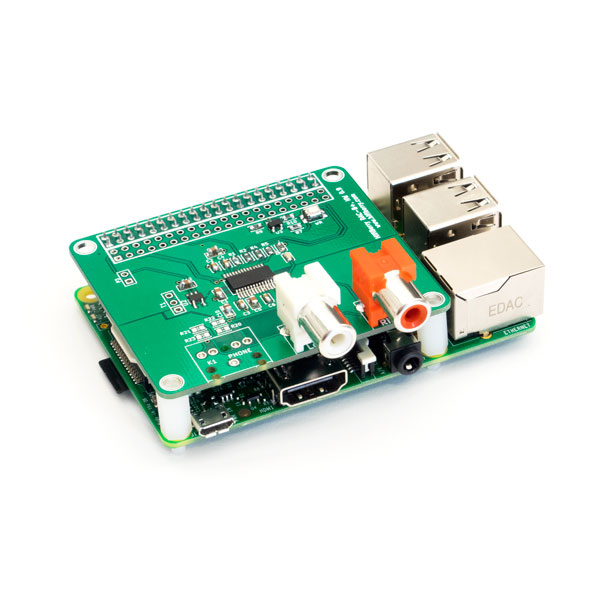
It still has a clear separation of analog and digital signals including ultra-low-noise regulator for the analog supply.
More details here:
HiFiBerry DAC+

It still has a clear separation of analog and digital signals including ultra-low-noise regulator for the analog supply.
More details here:
HiFiBerry DAC+
I got one last week. Sounds good! I really like it a lot.The HiFIBerry DAC is now available in a new "DAC+" version for the new Raspberry Pi B+. It now uses the PCM5122.
I just ordered one of these a few days ago; glad to hear people got them and liked them. Can't wait to get it hooked up!
@Bas: Good to hear that you liked it
@shersch: Your DAC+ is already on the way to you. I hope it will arrive soon.
Best regards
Daniel
@shersch: Your DAC+ is already on the way to you. I hope it will arrive soon.
Best regards
Daniel
Hi Daniel,
Excellent work. I did know about Hifiberry DAC, but just found this thread. Another reason why I appreciate your work is that I use the Hifiberry I2S driver option in volumio to feed my DAC. At the moment I use a purchased ESS9023, but I just modify my AD1865 board to receive signal from Ian's I2S to PCM board.
I have 2 questions?
1, what other sw you recommend, other than volumio? I have a large collection and it is a pain to use the web interface.
2, do you plan to allow external clock to be fed to the DAC chip and make the PI slave for that ? In order to lower jitter.
Thanks,
JG
Excellent work. I did know about Hifiberry DAC, but just found this thread. Another reason why I appreciate your work is that I use the Hifiberry I2S driver option in volumio to feed my DAC. At the moment I use a purchased ESS9023, but I just modify my AD1865 board to receive signal from Ian's I2S to PCM board.
I have 2 questions?
1, what other sw you recommend, other than volumio? I have a large collection and it is a pain to use the web interface.
2, do you plan to allow external clock to be fed to the DAC chip and make the PI slave for that ? In order to lower jitter.
Thanks,
JG
Hi Giordano,
for large collections I personally like iTunes and airplay or Logitech Media Server and piCorePlayer.
We are thinking about external clocks. However don't expect that this will work with any external DAC.
Best regards
Daniel
for large collections I personally like iTunes and airplay or Logitech Media Server and piCorePlayer.
We are thinking about external clocks. However don't expect that this will work with any external DAC.
Best regards
Daniel
Hi Giordano,
for large collections I personally like iTunes and airplay or Logitech Media Server and piCorePlayer.
We are thinking about external clocks. However don't expect that this will work with any external DAC.
Best regards
Daniel
Hi Daniel,
I appreciate your help. This picoreplayer+LMS works O.K., the first after media monkey what is not PC and not iTunes.
Thanks,
JG
I just remembered this thread. There was a question about external clocks. The new HiFiBerry DAC+ Pro now uses 2 external low-jitter oscillators. If you want to connect an external DAC, this can be done with the I2S output on the board. This allows to connect DACs that require a master clock that is synchronous to the other clocks:
DAC+ Pro - connect external I2S DACs – HiFiBerry
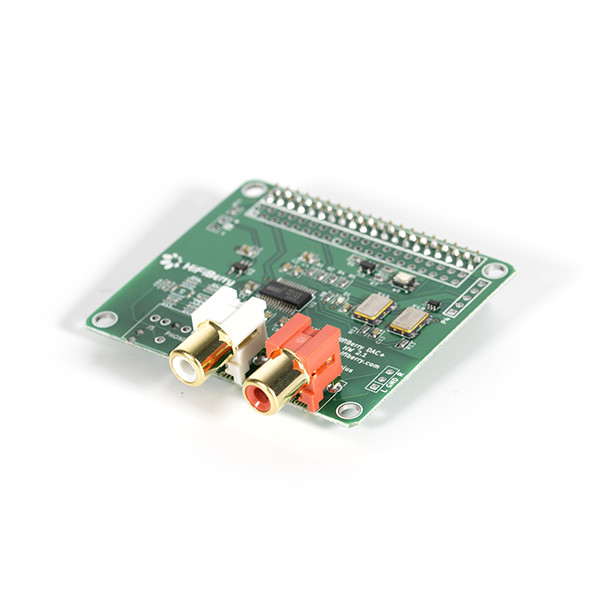
DAC+ Pro - connect external I2S DACs – HiFiBerry

Last edited:
I bought a generic pcm5122 rpi card a few weeks ago. really liking it. I am surprised, as I didn't think it would work at 24/192 but sure enough, it really does.
rpi2, the usual wifi dongle (the stubby kind that everyone uses; forget its number but its the most common one that is not the pi-official one). data is stored on a low-performance NAS. as long as I'm not doing an mpd update (I'm using rune audio's mpd distro) it works great.
for most listening, this is not a bad system. I would not consider it competition quality, but for everyday listening, its more than good enough.
nice job guys, all who have been involved, and I know it was a large group of people who got i2s working on the pi, all told.
rpi2, the usual wifi dongle (the stubby kind that everyone uses; forget its number but its the most common one that is not the pi-official one). data is stored on a low-performance NAS. as long as I'm not doing an mpd update (I'm using rune audio's mpd distro) it works great.
for most listening, this is not a bad system. I would not consider it competition quality, but for everyday listening, its more than good enough.
nice job guys, all who have been involved, and I know it was a large group of people who got i2s working on the pi, all told.
I bought a generic pcm5122 rpi card a few weeks ago. really liking it. I am surprised, as I didn't think it would work at 24/192 but sure enough, it really does.
rpi2, the usual wifi dongle (the stubby kind that everyone uses; forget its number but its the most common one that is not the pi-official one). data is stored on a low-performance NAS. as long as I'm not doing an mpd update (I'm using rune audio's mpd distro) it works great.
for most listening, this is not a bad system. I would not consider it competition quality, but for everyday listening, its more than good enough.
nice job guys, all who have been involved, and I know it was a large group of people who got i2s working on the pi, all told.
Ah, welcome on board to the fun!
A Pi based audio source... some new amps... are speakers next???
here's the audio board on top of my pi.
which, is on top of a dual slot 2.5" SATA hot swap cage. that has a usb adapter, each, going to 2 of the 4 pi's usb ports. 3rd usb port is using wifi dongle.
really ugly build. chassis is being designed now 😉
will add an i2s->spdif chip later on, as an add-on. for now, the analog-out from the pcm is ok. I am setting the digital gain to 95% so that I avoid any gibbs clipping, that this chip series kind of is known for.
which, is on top of a dual slot 2.5" SATA hot swap cage. that has a usb adapter, each, going to 2 of the 4 pi's usb ports. 3rd usb port is using wifi dongle.
really ugly build. chassis is being designed now 😉
will add an i2s->spdif chip later on, as an add-on. for now, the analog-out from the pcm is ok. I am setting the digital gain to 95% so that I avoid any gibbs clipping, that this chip series kind of is known for.
Attachments
Great looking project! What enclosures did you use, or are they custom designed? I particularly like the plexiglass top. Nice to see the inside. 🙂rear view added
Also, what PSU are you running the 5v line from for the pi and DAC unit? I'm looking for a small linear PSU for my similar streaming project.
redjr
Member
Joined 2009
Paid Member
What enclosures did you use, or are they custom designed? redjr
Look at his Avatar. Then zoom in on the photo of his box and you'll see the same logo. Above the logo is the name 'sercona' audio. He is developing a website for this brand here: http://www.netstuff.org/sercona/
I don't know if this is a commercial exploit, but I do like the look of that pre-amp and may like to know how to build one myself !
Attachments
hello, maybe it off topic a bit.rear view added
do you made this case your self?
how you do all the cutting?
thank for advice.
I wish to do a master DAC only for 44.1KHz taking I2S signals from RPI.
Can you give some guidance here...?
Can you give some guidance here...?
The DAC chip is a PCM5102. Version 2 will use a PCM5122 which will act as master for all clocks.
- Home
- Source & Line
- Digital Line Level
- My DAC for the Raspberry Pi
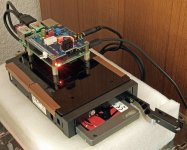
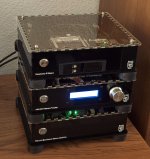
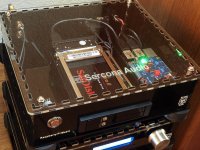
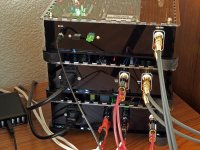
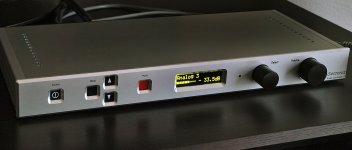
 Relocated to Digital Line Level since the thread is about a DAC.
Relocated to Digital Line Level since the thread is about a DAC.